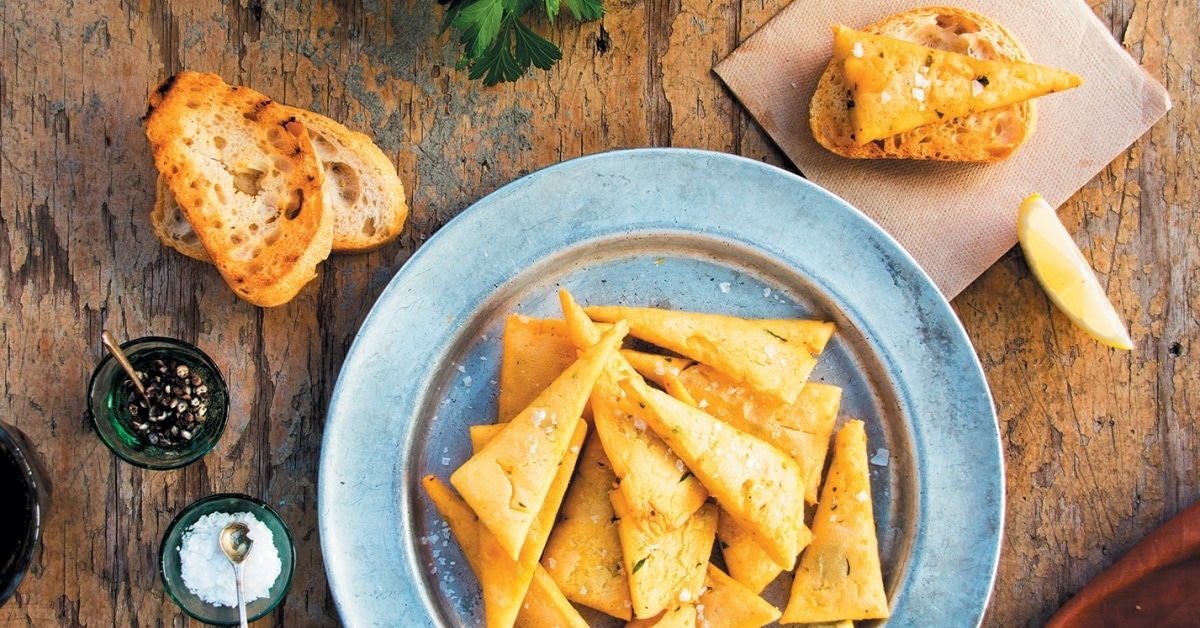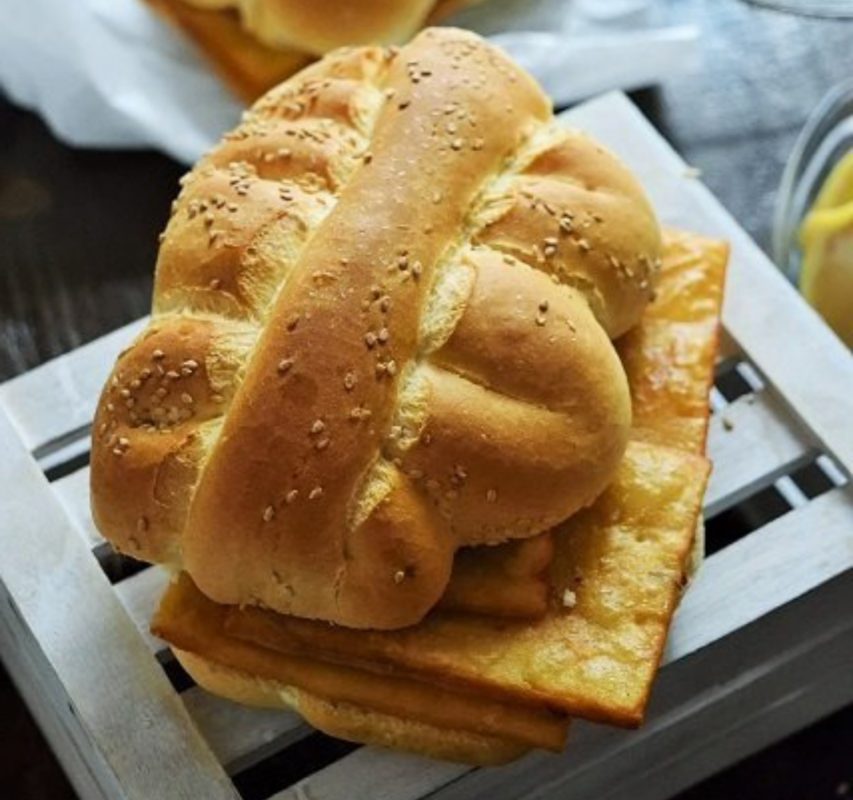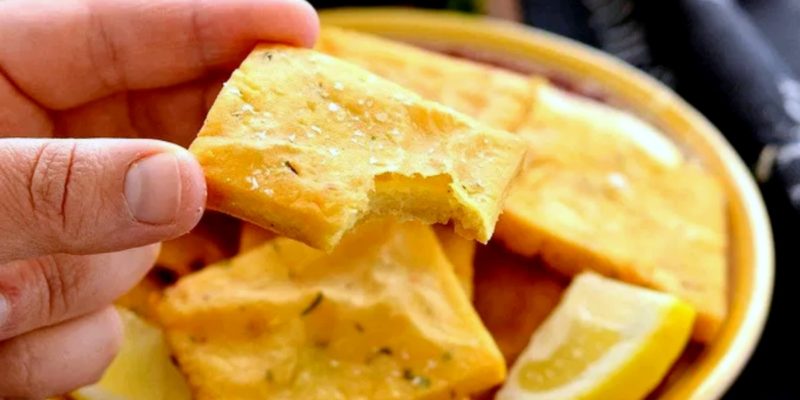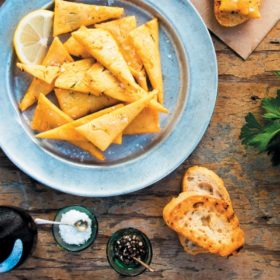Panelle are classic and delicious chickpea fritters that are a Palermo popular street food tradition you won’t want to miss. Keep reading to find out how panelle sicilian chickpea fritters are made, how they are traditionally served in small buns, and how you can make them at home by following our recipe for this delightful snack.

Panelle Sicilian chickpea fritters are small fritters that are made with chick pea flour, salt, ground black pepper, and a drop of freshly squeezed lemon juice or dash of parsley before they are fried to perfection and served hot in a warm bun.
As a popular Siclian street food, they are usually served as “pane e panelle” or “bread and fritters” in small buns called Mafalde, a typical Sicilian bread covered with sesame seeds. Buns filled with panelle are found in the dozens of fried food shops and street vendors called panellari throughout Palermo, especially in the famous Ballarò market.

This recipe is for the Sicilian chickpea fritters only and not for the bread roll, so the first thing you will need to do is find a suitable roll to serve panelle with. Here are three different roll types that can be used, or you can look for one that is similar at your local grocery store or bakery.
To make this popular Sicilian street food, you will need:
The total time you will need to prepare this dish, between cooking the mixture and frying to a golden brown, is about 35 minutes. Then you will want to serve hot for the best taste.
This panelle recipe is super simple and really doesn’t have a lot of ingredients. Here is an explanation of the few ingredients you’ll need:

You will start by putting the chickpea flour and salt in a large sauce pan or pot and mixing well. Then you will add the water a little at a time, while whisking the chickpea flour to prevent lumps. Next, turn the flame on medium heat under the chickpea mixture and stir constantly with a whisk as it thickens. When it has formed a sort of polenta looking consistency, and comes away from the sides, it is almost ready. When the chickpea mixture is compact and not liquid, and you can remove it from the heat.
Prepare a large cutting board with parchment paper and pour the chickpea mixture out onto it. Spread the mixture evenly over the paper, it should be about 1/4 inch thick. Let it cool for about 20 minutes.
Gently place a second sheet of paper on the surface of the chick pea dough and lightly roll it with a rolling pin to create a uniform surface, do not press hard. Let it cool the rest of the way.
Cut the panelle dough into single fritters using a square, rectangular or triangular cookie cutter, or simply a knife, it will make about twenty.
Heat the vegetable oil in a deep pan until quite hot. Submerse each of the fritters fully for approximately 2 minutes, without turning. You can cook several panelle at a time, but they should not touch each other while frying.
Prepare several plates with paper towels and remove each fried panelle carefully with tongs and place on the paper towels. Sprinkle the chickpea fritters with a dash of salt. You can also top them with fresh squeezed lemon, parsley or black pepper.
Place several fritters in one of the Sicilian style buns or bread with sesame seeds and serve hot as a panelle sandwich.
If you prefer a healthy version that isn’t deep fried, you can bake panelle in the oven at 400°F on parchment paper or a greased baking sheet for about 15 minutes, then turn on the broiler for the last few minutes.
This isn’t a new variation, in fact, panelle were most likely originally baked and not fried! Historians believe that the first panelle were cooked on stone in vertical ovens typically used to bake flat breads popular in Middle Eastern cuisine and it wasn’t until the Middle Ages that Sicilians began to deep fry them.
Try other Italian bread recipes:

Already in ancient Roman times, chickpeas (or garbanzo beans which is another name for them) were widely used in cooking and chickpea flour was consumed by all the populations in the Mediterranean. It was the Arabs who first experimented with grinding chickpeas into chickpea flour and then mixing it with water before cooking it, sort of like polenta. Making the chickpea flour was a great way to preserve the protein-rich legumes to use throughout the year.
A panelle sandwich is one of the fried foods that has remained a cornerstone of Palermo’s gastronomy. Historically, “pane e panelle” were sold only in winter, from Saint Lucy’s Day on December 13th through Christmas, to celebrate the abundance during the holidays with this rich fried food. However, later, panelle were available all year round. In fact, panelle became a daily staple for the poor and sometimes the only meal they might eat all day.